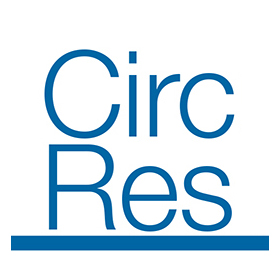
Jiayu Su
@EdJiayu
Followers
72
Following
112
Media
16
Statuses
34
PhD student @Columbia DSB | Class of 2020 @Peking University (he/him)
Joined September 2016
Please check our SuppNote for more methodological details and our unsuccessful attempts with parametric models (and prove my PI wrong who claimed no one would read them!) https://t.co/isv554JpJI
biorxiv.org
Transcript diversity including splicing and alternative 3’end usage is crucial for cellular identity and adaptation, yet its spatial coordination remains poorly understood. Here, we present SPLISOSM...
0
0
0
[5/n] For differential usage analysis, we implement a conditional HSIC test that controls for spatial confounding by removing location effects from both isoform usage and potential regulators
1
0
0
[4/n] We validated SPLISOSM's three spatial variablity tests in simulation, confirming that they capture variability in the correct layer while producing calibrated, permutation-free p-values that are robust to data sparsity
1
0
0
[3/n] The statistical power of HSIC-based tests depends heavily on kernel choice. We introduce: (1) a full-rank graph-based spatial kernel with provably higher power and principled approximation if needed and (2) a new compositional kernel that handles sparse data with NA ratios
1
0
0
[2/n] SPLISOSM reformulates spatial variability (and differential usage) detection as *multivariate* kernel (*conditional*) independence tests. We employ the Hilbert-Schmidt Independence Criterion (HSIC) with theory-driven kernels for isoform compositions and spatial coordinates.
1
0
0
🧵How does SPLISOSM work? [1/n] Analyzing isoform patterns in ST data is challenging. Isoform usage is multivariate and compositional (sum-to-one), data is extremely sparse (<1 UMI per gene&spot), and for differential analysis, spatial autocorrelation generates false associations
1
0
0
[6/n] SPLISOSM works across ST platforms with isoform information (SiT, Visium fresh frozen, Slide-seqV2 etc). We envision SPLISOSM to uncover additional *transcript*-omic insights from existing data in health and disease😉. Code available at
github.com
Isoform-level spatial transcriptomics analysis. Contribute to JiayuSuPKU/SPLISOSM development by creating an account on GitHub.
0
0
1
[5/n] In glioma, microenvironment reshapes transcript diversity during tissue remodeling and immune infiltration. We found changes in antigen presentation, signal transduction, adhesion, cytoskeleton, and ribosome pathways (the spliceosome machinery even modifies itself!)
1
0
1
[4/n] Using *conditional* differential usage test, we linked isoform patterns to RNA binding proteins, revealing interesting regulatory mechanisms such as Arpp21 auto-regulation via miR-128-2, conserved SEPTIN8 selection in mouse and human brains, and even an "paradox" (Fig 5)
1
0
1
[3/n] We found 1000+ genes with spatial isoform variation in brain enriched in synaptic signaling pathways and neuropsychiatric disorders (functionally distinct from variably expressed genes). 25% of 3'end diversity affects protein coding. Many patterns conserved across species.
1
0
1
[2/n] Most genes produce multiple RNA isoforms, yet their spatial distribution is overlooked despite being captured by major sequencing-based ST platforms. SPLISOSM (SPatiaL ISOform Statistical Modeling) now completes the missing piece🧩 Methodology to come in a subthread⬇️
2
0
1
[1/n]📢How is your spatial analysis *transcript*-omic if transcripts are only aggregated to gene counts? Introducing SPLISOSM, our new computational method for learning the isoform landscape and its regulation from spatial transcriptomics data https://t.co/eBwnwA8Twx
1
12
34
[2/2] There are many cool applications in the paper. Please stop by at the poster and chat if you’re interested☺️ East Exhibit Hall A-C #1106 Wed 11 Dec 11 a.m. PST — 2 p.m. PST Paper: https://t.co/DWCwo4FTJR Code:
0
0
0
[1/2]📣I will be at #NeurIPS2024 this week to present our work on a multi-subspace extension of PCA for representation learning. We unify supervision and disentanglement through HSIC, and showcase how to learn separate and interpretable subspaces of interest for single-cell data
6
0
3
1/8 🧬 Excited to share our latest work on the diverse role of #macrophages in #atherosclerosis! We've developed a pipeline to quantify the disease relevancy across macrophage subpopulations using single-cell multiome data. Check out the paper at https://t.co/ahMCY2wQha
1/4 New @CircRes #DiscoverCircRes episode! @StHilaireLabchat w/ Dr. Chris O’Callaghan & Jiahao Jiang from @UniofOxford re: their study A Novel Macrophage Subpopulation Conveys Increased Genetic Risk of Coronary Artery Disease https://t.co/oijvqTFUWJ
2
2
5
More details and examples in the paper https://t.co/38tE19vS8f. Don't forget to check out the package https://t.co/P6wJD1d6Wn and start your favorite *spatially informed* analysis right away!
github.com
A Unified and Modular Framework to Incorporate Structural Dependency in Spatial Omics Data - JiayuSuPKU/Smoother
0
3
4
[8/n] Finally a shoutout to the amazing team especially JB, @alexanderfuxi and my supervisors @david_a_knowles @RabadanLab! Excited to have the first major piece of my PhD out and it’s been an incredible journey so far. Hopefully more to come in 2024!🤞
1
2
3
[7/n] Most importantly, what new biology can we learn?👨🔬In colon cancer, we discover distinct spatial localization patterns of plasma cell subtypes (IgG+ in lesion and IgA+ in mucosa), which is reported of clinical interests, and link them to fibroblast-related matrix remodeling.
1
1
3
[6/n] Example 2⃣: Slide-seqV2 data is often too sparse to blend into single-cell atlases. Extending SCVI, we provide the first *spatially aware* joint embeddings of spatial and single-cell human prostate data, removing batch effects and reducing ambiguity in label transfer.
1
2
4
[5/n] When is spatial modeling useful? Always, but even more so with noisy data. Example 1⃣: When using deconvolution to map transcriptomic cell types to epigenomic CUT&Tag data, biologically coherent embryonic compartmentalization is revealed only under spatial regularization.
1
1
2




